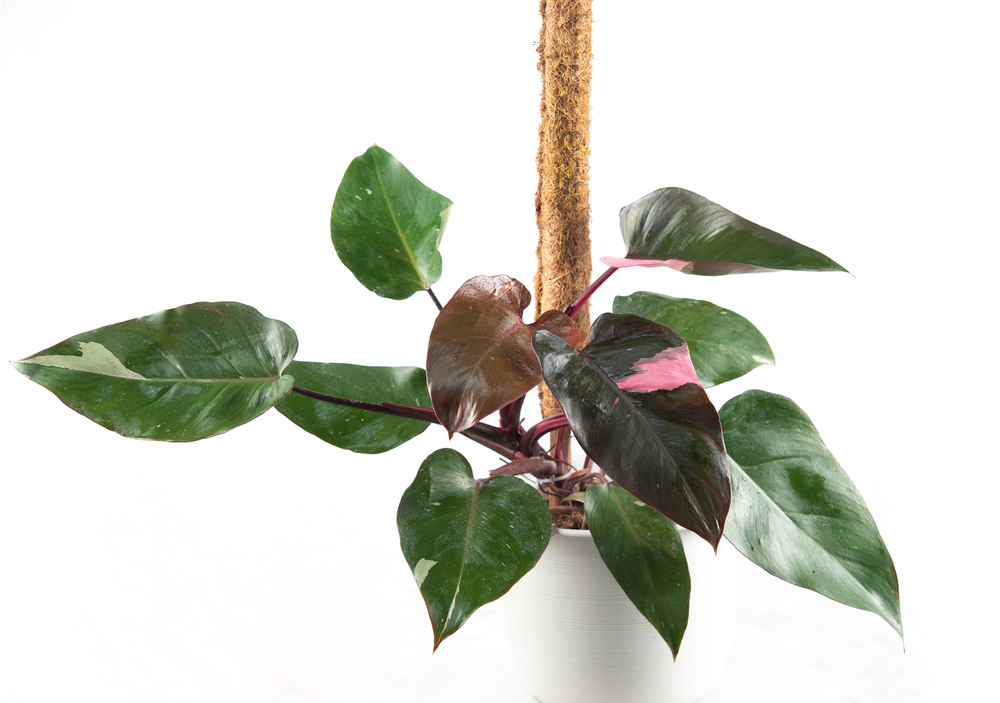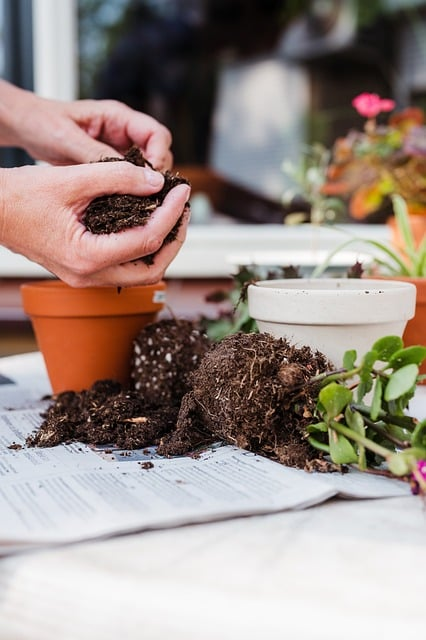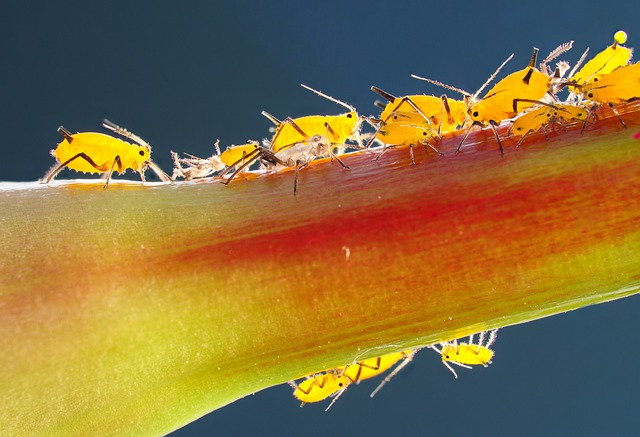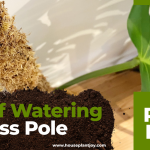HousePlantJoy is supported by our audience. When you purchase through one of our links, we may earn a small affiliate commission. As an Amazon Associate I earn from qualifying purchases. Your cost is not affected.
==================
Pink Princess Philodendron
Welcome to the wonderful world of the pink princess philodendron. This unique plant, with its vibrant pink and green leaves, is a showstopper in any plant collection. Its striking appearance, combined with its relatively easy care, makes it a popular choice among indoor plant enthusiasts. But don’t let its royal name fool you; this princess is more resilient than you might think.
In this comprehensive guide, we will delve into the world of the pink princess philodendron, understanding its needs and peculiarities. Whether you’re an experienced gardener or a beginner looking to expand your indoor plant collection, this guide will provide you with all the information you need. Let’s start our journey with a thorough understanding of the pink princess philodendron plant.
Understanding Pink Princess Philodendron Plant
The pink princess philodendron, scientifically known as Philodendron erubescens ‘Pink Princess’, is a rare and expensive houseplant known for its stunning variegated foliage. The leaves are a dark, glossy green with dramatic splashes of pink, giving it a unique and striking appearance. This is a climbing or vining type of philodendron, which means it will need some form of support to grow optimally.
The pink princess philodendron is a hybrid plant, which means it was created by crossing two different philodendron species. It’s a tropical plant, native to the rainforests of South America, so it thrives in warm, humid environments. Despite its tropical origins, it adapts well to indoor conditions, making it a popular choice for homes and offices.
Key Features of Pink Princess Philodendron
The pink princess philodendron has several key features that make it stand out among other indoor plants. The most noticeable feature is, of course, its striking pink variegation. The pink splashes or patches are random, so each leaf is unique. This makes every pink princess plant a one-of-a-kind specimen.
Another key feature is the plant’s growth habit. As a climbing or vining philodendron, it likes to grow upwards, climbing on supports such as moss poles or trellises. This growth habit, combined with its vibrant leaves, makes it a great plant for adding a touch of tropical jungle to your indoor space.
Lastly, the pink princess philodendron is a relatively fast grower, especially when given optimal care conditions. With the right care, your pink princess can become a large, sprawling plant that will definitely catch the eye of anyone who sees it.
How to Care for Pink Princess Philodendron
Caring for a pink princess philodendron isn’t as daunting as it might seem. While it’s true that this plant has specific care requirements, once you understand these needs, maintaining your pink princess will be a breeze. The main factors to consider are light, humidity, and soil type.
Pink princess philodendrons require bright, indirect light. Direct sunlight can scorch their leaves, while too little light can cause the pink variegation to fade. A north or east-facing window is usually ideal.
Humidity is also crucial for this tropical beauty. It thrives in humid environments, so consider placing your plant in a bathroom or kitchen, where humidity levels tend to be higher. Alternatively, you can use a humidifier or place the plant on a tray of pebbles with water to increase humidity levels.
As for soil, pink princess philodendrons prefer well-draining soil. A mixture of peat moss and perlite is a good option. The soil should be kept moist, but not waterlogged.
Location
In addition to the above care tips for a healthy plant, locate your new plant in an area away from pets and children. Like all philodendron plants, Pink Princess is toxic. Display them up and away for safety.
Watering Pink Princess Philodendron: Tips and Tricks
Watering is a crucial aspect of pink princess philodendron care. These plants like to stay moist but not waterlogged, so it’s important to strike the right balance. Overwatering can lead to root rot, a common problem that can be fatal to your plant.
A good rule of thumb is to water your pink princess when the top inch of soil feels dry to the touch. This will typically mean watering once a week, but this can vary depending on the conditions in your home.
When watering, be sure to water thoroughly, so that water flows out of the drainage holes at the bottom of the pot. This ensures that the roots are adequately hydrated. But remember, don’t let your plant sit in water; always remove any excess water from the saucer.
Repotting Pink Princess: When and How
Repotting your pink princess philodendron is essential for its growth and health. As a fast-growing plant, it can quickly outgrow its pot. Repotting helps give the roots more room to spread and allows you to refresh the soil.
Typically, you should plan to repot your pink princess every one to two years. The best time to do this is in the spring or early summer, during the plant’s active growing season.
To repot your pink princess, first, carefully remove it from its current pot. Then, gently tease apart the roots and inspect them for any signs of disease or rot. Place the plant in a new pot that is one size larger than the old one, and fill with fresh, well-draining soil.
Pruning Pink Princess Philodendron: A Step-by-Step Guide
Pruning your pink princess philodendron is an essential part of its care. Not only does it help keep the plant’s size in check, but it also promotes bushier growth and helps keep the plant healthy.
Begin by identifying which parts of the plant you want to prune. This could be any dead or diseased leaves, as well as any extra-long vines that are making the plant look leggy. Check the plant stems for weakness, too.
Using a clean, sharp pair of pruning shears, make your cuts just above a leaf node (the point where a leaf connects to the stem). This will encourage new growth from this point.
Remember, pruning is not just about cutting back. It’s also an opportunity to propagate your plant. Any cuttings you take can be placed in water to root, and then planted to create a whole new pink princess philodendron.
Note: Pruning is a great time to consider propagating your philodendron plants
Propagate Philodendron Plants
The Pink Princess Philodendron is a beautiful plant that is relatively easy to propagate. The best way to propagate it is by stem cuttings. To do this, you will need a sharp knife or shears, a pot with well-draining soil, and a rooting hormone.
I recommend you start with a healthy mother plant for the best success. I root my philodendron in water. Some prefer to put the cuttings in a sand filled container. Either way, once the rooted cuttings are ready, use the same potting soil as the mother plant grows in.
Philodendron Propagation Steps:
- Choose a healthy stem that has at least two nodes. A node is the point where a leaf meets the stem.
- Cut the stem below the node, using a sharp knife or shears.
- Remove any leaves from the bottom half of the cutting.
- Dip the cut end of the cutting in rooting hormone.
- Plant the cutting in the pot with well-draining soil.
- Water the soil until it is moist but not soggy.
- Place the pot in a warm, humid environment.
- Keep the soil moist and the humidity high.
In a few weeks, you should see new roots developing. Once the roots are established, you can transplant the cutting into a larger pot.
Additional Pink Princess Philodendron Propagation Tips:
- Use a pot that is just slightly larger than the cutting.
- Use a well-draining potting mix.
- Water the soil regularly, but do not overwater.
- Keep the humidity high by placing the pot in a room with high humidity, or by placing the pot on a tray of pebbles filled with water.
- Be patient! It can take several weeks for the cutting to root.
With a little patience and care, you will be able to propagate your own Pink Princess Philodendron plant.
Common Problems and Solutions in Pink Princess Philodendron Care
Like any plant, the pink princess philodendron can encounter a few problems. But don’t worry; most of these issues are easily resolved once you know what to look for.
One common problem is yellowing leaves, which is typically a sign of overwatering. If you notice this, reduce your watering frequency and check to make sure your plant’s pot has adequate drainage.
On the other end of the spectrum, brown, crispy leaf tips can indicate underwatering or low humidity. Increase your watering frequency and consider using a humidifier or pebble tray to boost humidity levels.
Pests can also occasionally be a problem. Keep an eye out for common houseplant pests like spider mites, aphids, and mealybugs. If you spot any, treat your plant with an insecticidal soap or neem oil.
Additional Tips for Healthy Pink Princess Plants
Beyond the basics of pink princess philodendron care, there are a few additional tips that can help your plant thrive.
Firstly, remember that this is a climbing plant. Providing a moss pole or trellis can help support its growth and also make for a more visually interesting display.
Secondly, remember to fertilize your plant during the growing season. A balanced houseplant fertilizer, applied monthly, can provide the nutrients your pink princess needs to produce its vibrant, variegated leaves.
Finally, be patient. The pink princess philodendron is a relatively fast grower, but it still takes time for it to reach its full glory. With consistent care, you’ll be rewarded with a stunning plant that’s sure to be the envy of any plant enthusiast.
Video Credit: @Planterina
Pink Princess Philodendron Plants
Mastering pink princess philodendron care doesn’t have to be daunting. With the right knowledge and a little patience, your plant stays healthy and thriving. Remember, the key to any successful plant care lies in understanding the specific needs of your plant. With this comprehensive guide, you’re well on your way to becoming a pink princess philodendron expert. Enjoy the journey and the stunning beauty of your pink princess plant.
Quick Facts About the Pink Princess Philodendron Plants
- The Pink Princess Philodendron is a rare and highly sought-after houseplant that features dark green, heart-shaped leaves with bubblegum pink variegation12.
- Pink Princess Philodendron is a hybrid of several Philodendron species, including Philodendron tatei and Philodendron wendlandii2. It belongs to the Araceae family, which includes other popular houseplants such as Peace Lilies and Anthuriums2.
- The Pink Princess Philodendron is native to South America, where it grows as a tropical vine in humid and warm conditions12.
- Pink Princess Philodendron is a slow-growing plant that can reach up to 4 feet tall and 2 feet wide indoors, with leaves that can measure up to 8 inches long and 5 inches wide13. It can benefit from a support such as a moss pole, totem, or trellis to keep it upright4.
- The Pink Princess Philodendron requires bright, indirect light to maintain its pink variegation. Too much or too little light can cause the leaves to revert back to green or lose their color12. A grow light can help supplement the natural light if needed1.
- Pink Princess Philodendron prefers moist but well-draining soil that is high in organic matter. A mixture of potting soil, perlite, and orchid bark can provide the ideal texture and drainage for this plant12.
- The Pink Princess Philodendron should be watered when the top half of the soil feels dry to the touch. It should never be left in soggy or waterlogged soil, as this can cause root rot and other fungal diseases12.
- Pink Princess Philodendron thrives in warm and humid environments, with temperatures ranging from 65°F to 85°F and humidity levels above 60%. A humidifier, pebble tray, or misting can help increase the humidity around the plant12.
- The Pink Princess Philodendron benefits from regular fertilizing during the growing season (spring and summer) with a balanced or high-nitrogen fertilizer diluted to half-strength. Fertilizing should be avoided during the dormant season (fall and winter)12.
- Pink Princess Philodendron can be propagated by stem cuttings or air layering. Stem cuttings should have at least one node and one leaf, and can be rooted in water or moist soil. Air layering involves making a small cut on a stem and wrapping it with moist sphagnum moss and plastic until roots form12.
- The Pink Princess Philodendron should be repotted every two to three years or when it outgrows its current pot. A pot that is one size larger than the previous one should be used, with fresh potting mix and good drainage holes12.
- The Pink Princess Philodendron is susceptible to common pests such as spider mites and mealybugs, which can be treated with neem oil, insecticidal soap, or rubbing alcohol. It can also suffer from leaf spot, bacterial blight, and root rot, which can be prevented by avoiding overwatering, providing good air circulation, and removing any infected parts12
- Like all Philodendrons and closely related species, Pink Princess Philodendron plants contain calcium oxalate crystals which are toxic to humans, dogs, cats, and other animals.
Blossom Bright: Your Path to Pink Princess Philodendron Mastery
In closing, we trust that this comprehensive guide has equipped you with the knowledge and confidence to nurture your Pink Princess Philodendron to its full potential. Caring for plants, after all, is more than a hobby – it’s a fulfilling journey that enriches your living space and reconnects you with nature.
If you’re eager to explore even more plant care wisdom, inspiration, and expert advice, look no further than the HousePlantJoy blog. Our treasure trove of articles and resources awaits your curiosity. Whether you’re a seasoned green-thumb or just starting your plant journey, our blog is your trusted companion on the path to greener, happier living spaces.
Thank you for joining us on this journey towards mastering Pink Princess Philodendron care. May your home flourish with the vibrant beauty of indoor greenery. Happy gardening!
FAQs
How often should I water my Pink Princess Philodendron?
Water your Pink Princess Philodendron when the top inch of soil feels dry to the touch. Typically, this means watering every 1-2 weeks, but it can vary depending on your home’s humidity and light conditions. Always check the soil moisture before watering.
Can I propagate my Pink Princess Philodendron in water?
Yes, you can propagate Pink Princess Philodendron cuttings in water. Place a cutting with a node in a container of water, making sure the node is submerged. Once roots develop, you can transfer it to soil.
How do I increase the pink variegation in my Pink Princess Philodendron leaves?
To enhance the pink coloration in your Pink Princess Philodendron, provide it with bright indirect light. Avoid direct sunlight, as it can scorch the leaves. Balanced fertilization and maintaining appropriate humidity levels can also help maintain vibrant pink hues in the foliage.
Cultivate Your Green Paradise with Us!
Discover a world of lush greenery, gardening expertise, and houseplant love by visiting our official website and connecting with us on social media. Join our thriving community on Facebook, follow our captivating visuals on Instagram, explore our garden dreams on Pinterest, get the latest updates on Twitter, and immerse yourself in the world of houseplants on TikTok.
Here’s what awaits you:
? Engaging Content: Dive into our website for a plethora of tips, tricks, and guides to nurture your green companions.
? Product Reviews: Make informed choices with our honest and insightful product reviews.
Community Connection: Join our passionate community of gardeners and houseplant enthusiasts to share your love for all things green.
Your gardening and houseplant journey starts here!

















